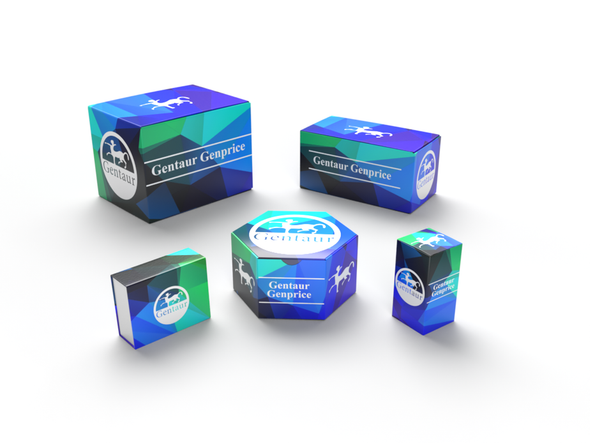749
Mouse Brachyury protein (T) ELISA Kit | KTE70317
- SKU:
- 749-KTE70317
- Availability:
- Usually ships in 5 working days
Description
Mouse Brachyury protein (T) ELISA Kit | KTE70317 | Gentaur UK, US & Europe Distribution
Application: This Mouse Brachyury protein (T) ELISA Kit employs a two-site sandwich ELISA to quantitate T in samples. An antibody specific for T has been pre-coated onto a microplate. Standards and samples are pipetted into the wells and anyT present is bound by the immobilized antibody. After removing any unbound substances, a biotin-conjugated antibody specific for T is added to the wells. After washing, Streptavidin conjugated Horseradish Peroxidase (HRP) is added to the wells. Following a wash to remove any unbound avidin-enzyme reagent, a substrate solution is added to the wells and color develops in proportion to the amount of T bound in the initial step. The color development is stopped and the intensity of the color is measured.
Detection Method: Colorimetric
Conjugate: N/A
Sample Type: Cell culture supernatants#Serum#Plasma#Other biological fluids
Assay Type: Multiple steps standard sandwich ELISA assay with a working time of 3-5 hours. It depends on the experience of the operation person.
Kit Component: • Mouse Brachyury protein microplate
• Mouse Brachyury protein standard
• Mouse Brachyury protein detect antibody
• Streptavidin-HRP
• Standard diluent
• Assay buffer
• HRP substrate
• Stop solution
• Wash buffer
• Plate covers
Features & Benefits: Mouse Brachyury protein (T) ELISA Kit has high sensitivity and excellent specificity for detection of Mouse T. No significant cross-reactivity or interference between Mouse T and analogues was observed.
Calibration Range: Please inquire
Limit Of Detection: Please inquire
Usage Note: • Do not mix components from different kit lots or use reagents beyond the kit expiration date.
• Allow all reagents to warm to room temperature for at least 30 minutes before opening.
• Pre-rinse the pipet tip with reagent, use fresh pipet tips for each sample, standard and reagent to avoid contamination.
• Unused wells must be kept desiccated at 4 °C in the sealed bag provided.
• Mix Thoroughly is very important for the result. It is recommended using low frequency oscillator or slight hand shaking every 10 minutes.
• It is recommended that all samples and standards be assayed in duplicate or triplicate.
Storage Instruction: The unopened kit should be stored at 2 - 8°C. After opening, please store refer to protocols.
Shipping: Gel pack with blue ice.
Precaution The product listed herein is for research use only and is not intended for use in human or clinical diagnosis. Suggested applications of our products are not recommendations to use our products in violation of any patent or as a license. We cannot be responsible for patent infringements or other violations that may occur with the use of this product.
Background: Brachyury appears to have a conserved role in defining the midline of a bilaterian organism, and thus the establishment of the anterior-posterior axis; this function is apparent in chordates and molluscs. Its ancestral role, or at least the role it plays in the Cnidaria, appears to be in defining the blastopore. It also defines the mesoderm during gastrulation.Tissue-culture based techniques have demonstrated one of its roles may be in controlling the velocity of cells as they leave the primitive streak. Transcription of genes required for mesoderm formation and cellular differentiation. Brachyury has also been shown to help establish the cervical vertebral blueprint during fetal development. The number of cervical vertebrae is highly conserved among all mammals; however a spontaneous vertebral and spinal dysplasia (VSD) mutation in this gene has been associated with the development of six or fewer cervical vertebrae instead of the usual seven.
Alternative Names: T; RP11-459F1.1; MGC104817; TFT; OTTHUMP00000017588; T brachyury homolog; T brachyury-like; transcription factor T
Search name: T; RP11-459F1.1; MGC104817; TFT; OTTHUMP00000017588; T brachyury homolog; T brachyury-like; transcription factor T
Tag: T






